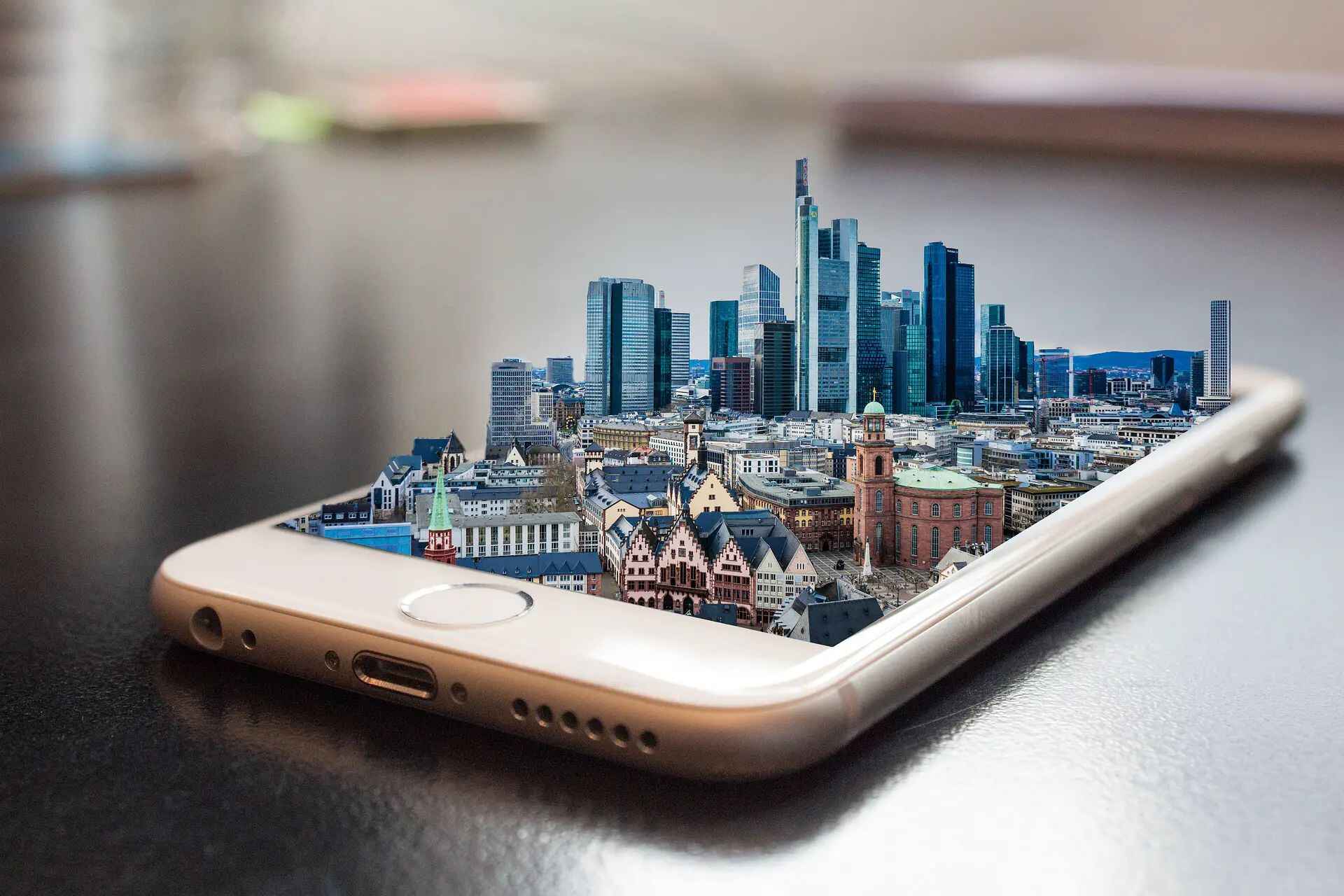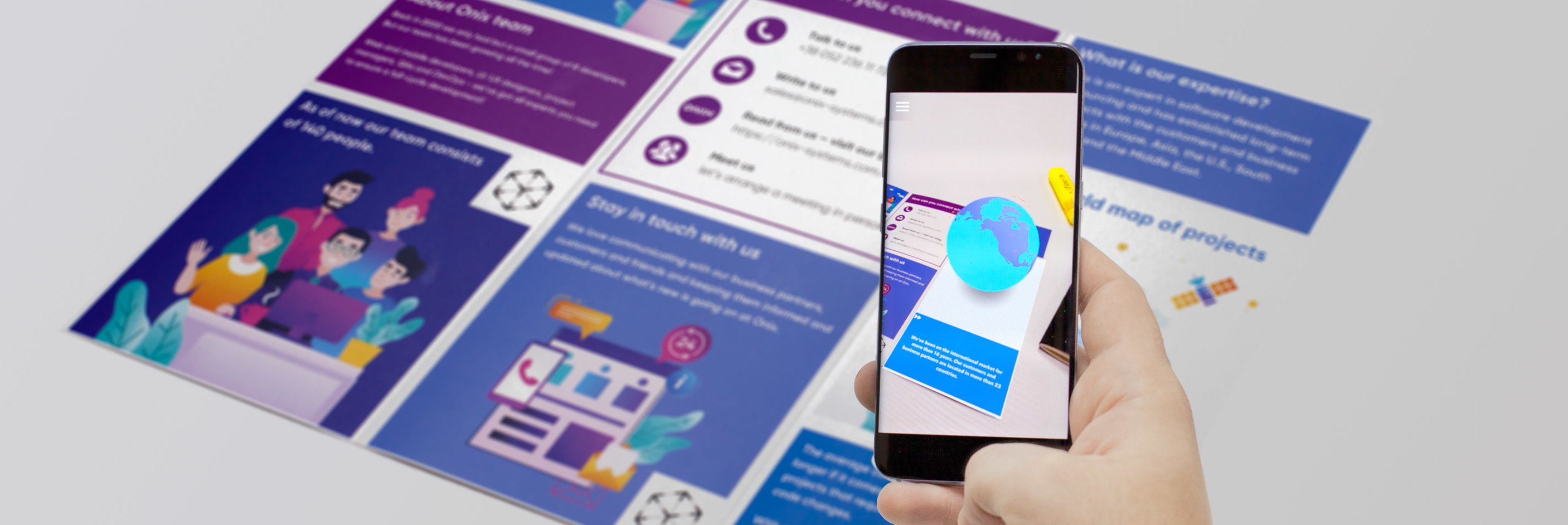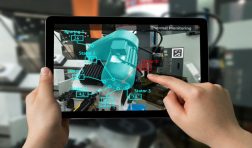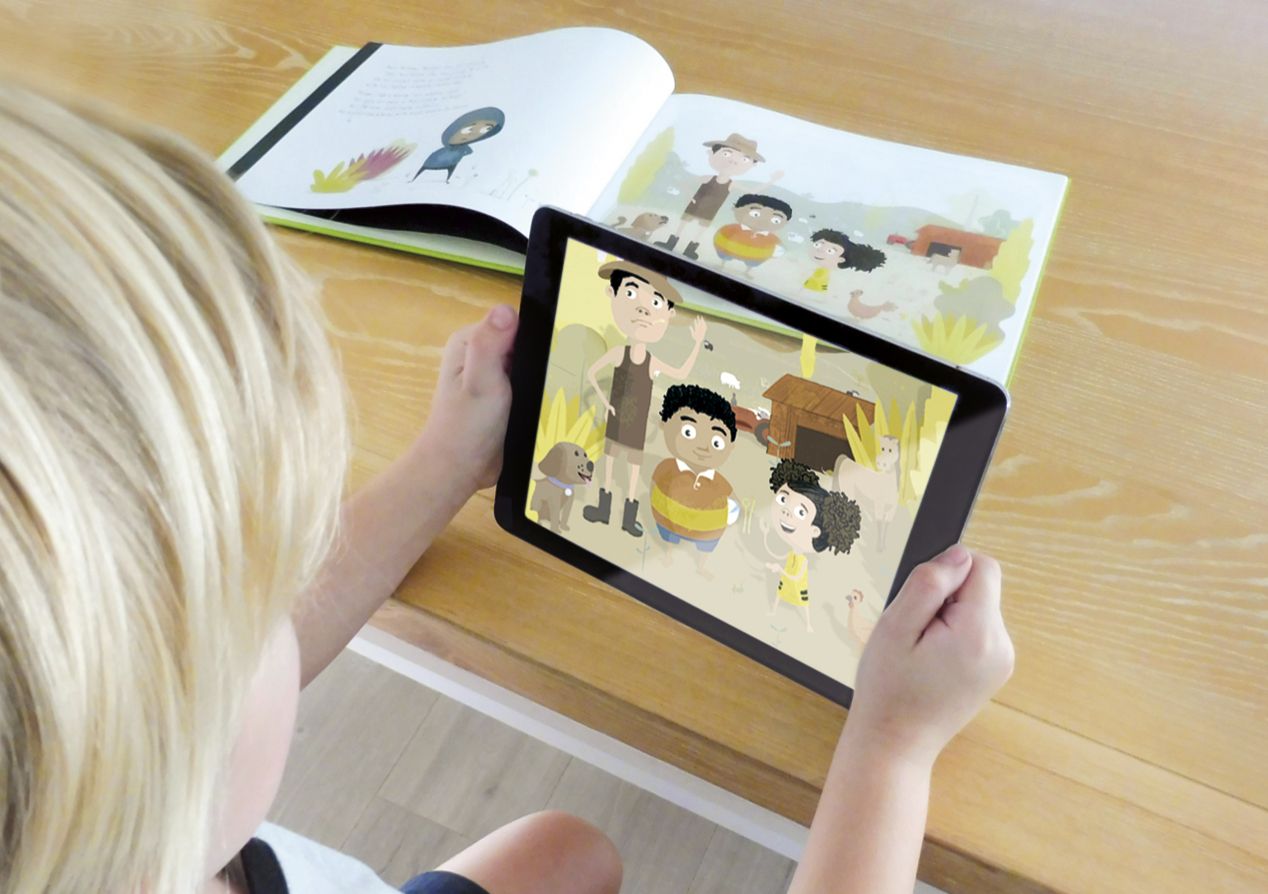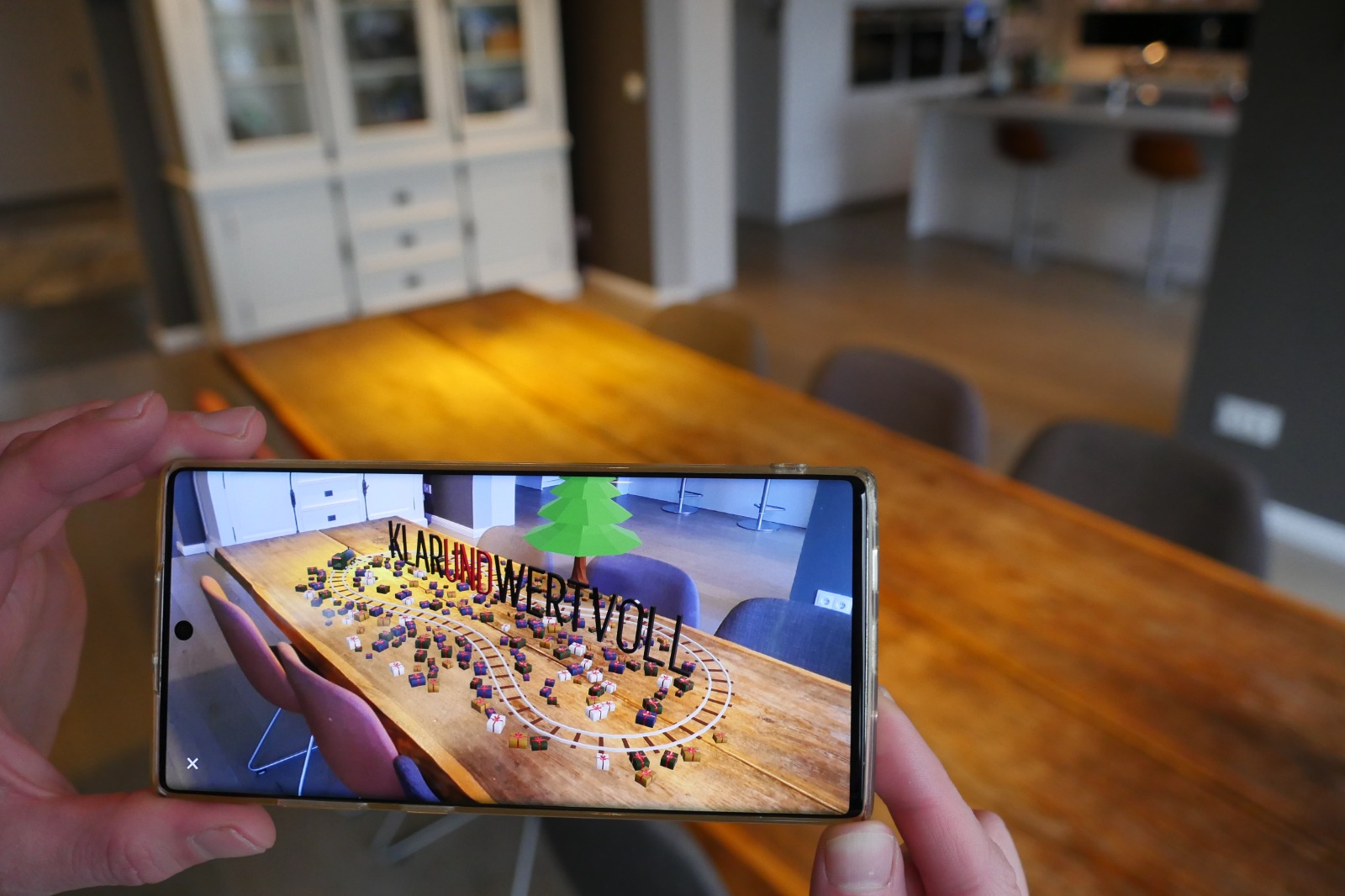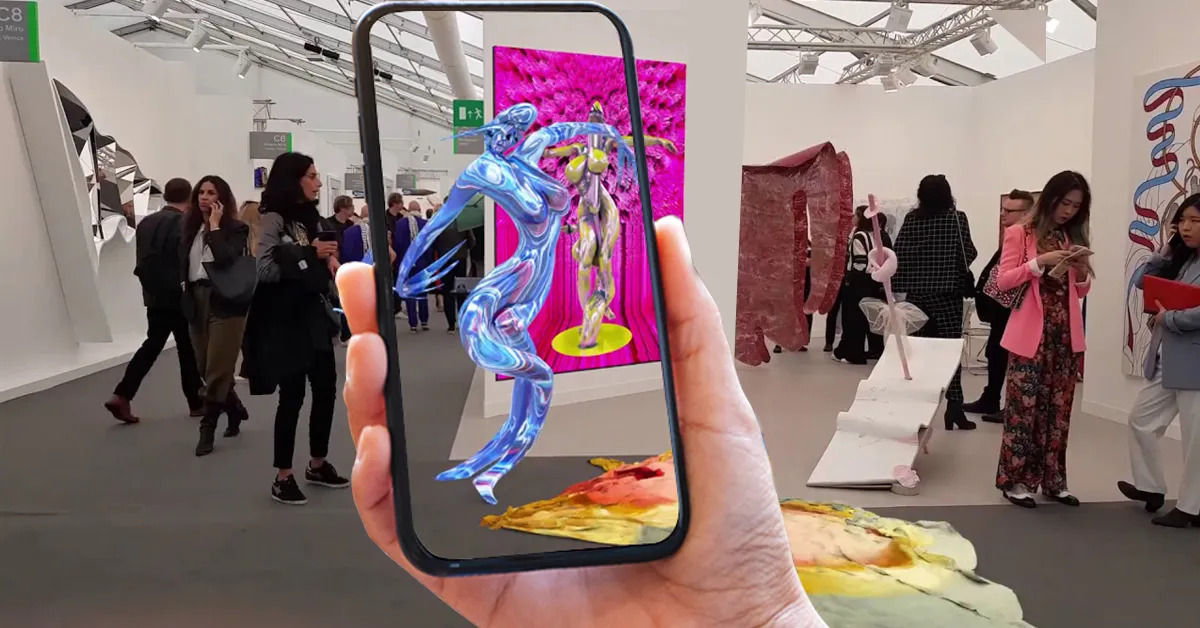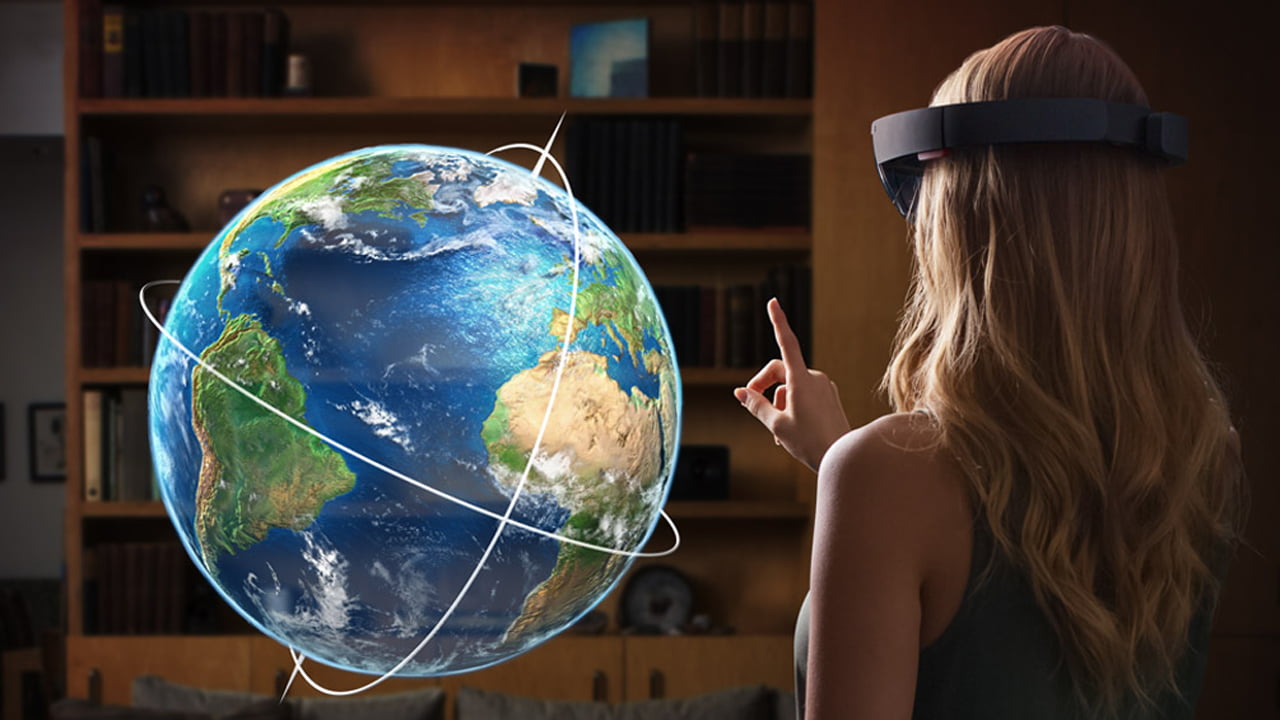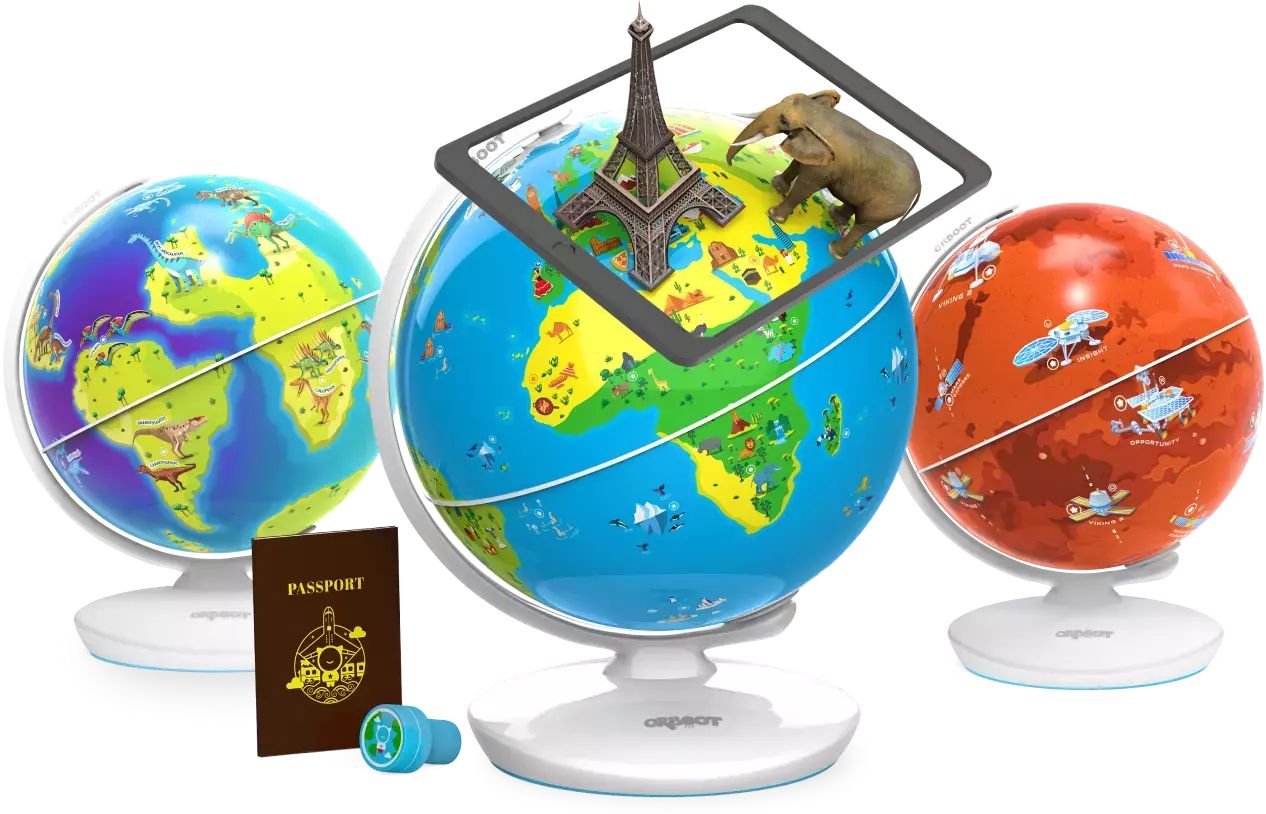What Is Augmented Reality Apps
Augmented Reality (AR) is a technology that overlays digital information, such as images, videos, or 3D models, onto the real world in real-time. It combines virtual elements with the existing environment to create an interactive experience. Augmented Reality apps are the applications designed to deliver this immersive and interactive experience to users through their smartphones or tablets.
Unlike Virtual Reality which creates a completely immersive digital environment, Augmented Reality enhances the real world by adding virtual elements. It allows users to interact with both real and virtual objects, providing a unique and engaging experience. Augmented Reality apps make use of the device’s camera and sensors to track the user’s location and movements, enabling the virtual objects to be placed and interacted with in the real world.
These apps have various applications across different industries. They can be used for gaming, education, retail, healthcare, real estate, and many more. For example, in gaming, Augmented Reality apps bring characters and objects to life in the player’s environment, creating a more immersive and interactive gaming experience. In education, these apps can provide interactive learning experiences, allowing students to explore and interact with virtual objects to enhance their understanding.
The popularity of Augmented Reality apps has been growing rapidly in recent years, thanks to the advancements in mobile technology and the increasing number of smartphones with AR capabilities. Major tech companies like Apple and Google have also recognized the potential of Augmented Reality and have integrated AR features into their operating systems, making it more accessible to users.
With the ability to blend the digital and physical world seamlessly, Augmented Reality apps have the potential to revolutionize the way we interact with technology. They open up new possibilities for entertainment, education, communication, and more. As technology continues to evolve, we can expect to see even more innovative and immersive Augmented Reality apps that will transform the way we experience the world around us.
Understanding Augmented Reality Technology
Augmented Reality (AR) technology is revolutionizing the way we interact with the world around us. It seamlessly blends digital information with the real world to create an immersive and interactive experience. Understanding the underlying technology behind Augmented Reality apps can help us appreciate its capabilities and potential.
At its core, Augmented Reality technology relies on computer vision, image recognition, and tracking algorithms to identify and understand the real-world environment. By using the device’s camera, these algorithms analyze and interpret the visual data in real-time, enabling the virtual objects to be placed accurately in the user’s field of view.
To achieve accurate tracking, Augmented Reality apps use different methods such as marker-based tracking, markerless tracking, and SLAM (Simultaneous Localization and Mapping). Marker-based tracking involves using specific visual markers or codes that are recognized by the app to position and track the virtual objects. Markerless tracking, on the other hand, relies on feature detection and tracking to establish the position and orientation of the device in relation to the environment. SLAM combines the sensor data from the device’s camera, gyroscope, and accelerometer to create a real-time 3D map of the environment.
Another critical component of Augmented Reality technology is the display, which presents the virtual objects on top of the real-world view. Augmented Reality apps use various display techniques, including handheld devices such as smartphones and tablets, wearable devices like smart glasses or headsets, and even projection-based systems. These display devices provide the visual feedback required for users to interact with the virtual elements seamlessly.
Furthermore, Augmented Reality apps rely on powerful hardware and software capabilities to render and display the virtual objects. The devices need to have sufficient processing power, memory, and graphics capabilities to deliver a smooth and realistic augmented experience. Additionally, developers leverage software development kits (SDKs) and frameworks specifically designed for Augmented Reality to streamline the development process and ensure compatibility across different devices.
Understanding the intricacies of the technology behind Augmented Reality apps helps us appreciate the complexity involved in creating these immersive experiences. As technology continues to advance, Augmented Reality is becoming more sophisticated, enabling more realistic virtual objects, improved tracking accuracy, and greater interactivity. This technology has the potential to reshape various industries and enhance our daily lives in ways we never thought possible.
Different Types of Augmented Reality Applications
Augmented Reality (AR) applications have a wide range of uses across various industries and sectors. These applications leverage the power of AR technology to deliver immersive, interactive, and informative experiences to users. Let’s explore some of the different types of Augmented Reality applications.
1. Gaming: One of the most popular uses of AR is in gaming. AR gaming apps overlay virtual objects, characters, or elements onto the real environment, allowing users to interact with them. These apps provide a unique and engaging gaming experience by blending the physical and digital worlds. Examples include Pokemon Go, where players search for and capture virtual creatures in the real world, and Minecraft Earth, which allows players to build and explore virtual structures in their actual surroundings.
2. Education and Training: Augmented Reality has significant potential in the field of education and training. AR apps can enhance learning experiences by providing interactive and immersive content. Students can visualize complex concepts, explore virtual objects, or take part in virtual experiments. AR training apps can simulate real-world scenarios, allowing trainees to practice their skills in a safe and controlled environment. For example, medical students can use AR apps to study human anatomy in 3D or simulate surgical procedures.
3. Retail and E-Commerce: Augmented Reality has revolutionized the retail industry by allowing customers to visualize products before purchasing them. AR shopping apps enable users to try on virtual clothing or accessories, see how furniture looks in their homes, or even test out virtual makeup. These applications enhance the online shopping experience and provide a better understanding of how products will look and fit in the real world, reducing the need for returns and increasing customer satisfaction.
4. Marketing and Advertising: Augmented Reality offers unique opportunities for marketing and advertising campaigns. AR apps can create interactive and immersive experiences for customers, enabling them to engage with brands and products in innovative ways. Brands can use AR to display virtual product demonstrations, offer personalized promotions, or deliver location-based experiences. This type of marketing creates a memorable and engaging interaction with users, leaving a lasting impression.
5. Navigation and Wayfinding: Augmented Reality navigation apps provide real-time visual directions, overlaying virtual arrows or instructions onto the user’s surroundings. These apps help users navigate complex environments such as airports, shopping malls, or museums. AR wayfinding apps can also provide additional information about points of interest, reviews, or ratings, enhancing the user’s overall navigation experience.
These are just a few examples of the diverse applications of Augmented Reality. From gaming to education, retail to marketing, AR has the potential to transform various industries and enhance user experiences. As technology continues to advance, we can expect to see even more innovative applications and uses for Augmented Reality in the future.
Benefits of Augmented Reality Apps
Augmented Reality (AR) apps offer numerous benefits that enhance user experiences and provide unique advantages across various industries. Let’s explore some of the key benefits of using Augmented Reality apps.
1. Enhanced User Engagement: AR apps create immersive and interactive experiences that capture users’ attention and hold their interest. By overlaying virtual elements onto the real world, these apps provide a more engaging and memorable user experience compared to traditional applications. Users can actively interact with virtual objects, explore 3D models, and discover hidden content, leading to increased engagement and enjoyment.
2. Improved Learning and Training: Augmented Reality has proven to be highly effective in educational settings. AR apps can transform learning by providing visual and interactive content that enhances understanding and retention. Students can explore complex concepts, visualize abstract ideas, and engage in hands-on activities. In training scenarios, AR apps allow users to practice and develop skills in a safe and controlled environment, improving knowledge retention and performance.
3. Enhanced Visualization: AR apps enable users to visualize and understand information in a more tangible way. Whether it’s visualizing how furniture will look in a room, exploring 3D models of architectural designs, or dissecting virtual anatomy, AR apps provide a realistic and interactive visualization experience. This helps users make informed decisions, understand concepts more easily, and see things from different perspectives.
4. Increased Efficiency and Productivity: In industrial and business settings, Augmented Reality apps can significantly improve efficiency and productivity. For example, technicians can use AR apps to overlay virtual instructions onto machinery, guiding them through maintenance or repair tasks. AR apps can also assist in real-time data visualization, providing workers with important information, such as inventory status, during the production process. These apps streamline workflows and reduce errors, leading to improved productivity.
5. Enhanced Customer Experience: Augmented Reality is transforming the retail and e-commerce industries by providing customers with a more immersive and personalized shopping experience. AR shopping apps allow users to virtually try on clothing and accessories, visualize furniture in their homes, or see how products will look before making a purchase. By providing a more interactive and informative experience, AR apps improve customer satisfaction and increase sales.
6. Real-time Data and Information: AR apps have the ability to overlay real-time data and information onto the user’s surroundings. This can be particularly useful in navigation apps, where users can see real-time directions and information about nearby points of interest. Additionally, AR apps can provide contextual information in a hands-free manner, such as displaying product details when scanning a barcode, or providing translations of foreign text. This real-time information enhances user interactions and provides valuable insights.
These are just a few of the many benefits of using Augmented Reality apps. From enhanced engagement and visualization to improved learning and productivity, AR apps have the potential to transform various industries and enhance user experiences. As technology continues to advance, we can expect even more innovative applications and benefits to emerge.
Top Augmented Reality Apps in the Market
Augmented Reality (AR) apps have gained significant popularity in recent years, thanks to their ability to deliver immersive and interactive experiences. Let’s explore some of the top Augmented Reality apps that are currently dominating the market.
1. Pokemon Go: This groundbreaking AR game became a worldwide phenomenon upon its release. Pokemon Go allows players to capture virtual creatures overlaid onto the real world using their smartphones. The game blends the real and virtual worlds seamlessly, encouraging players to explore their surroundings to find and collect Pokemon.
2. Snapchat: Snap’s popular social media app, Snapchat, incorporates AR features such as filters and lenses. Users can overlay different effects onto their selfies and videos, transforming their appearance in real-time. Snapchat’s AR filters have become iconic and have greatly contributed to the app’s success.
3. IKEA Place: Ikea Place is an AR app designed for furniture shopping. Users can virtually place Ikea furniture items in their homes using their smartphone’s camera. This allows customers to visualize how the furniture will look and fit in their space before making a purchase, reducing the need for guesswork and potential returns.
4. Google Translate: Google Translate incorporates AR technology to provide real-time translation of text. By using the camera on a smartphone, users can point it at foreign text and see the translation overlaid on the screen. This feature has proven to be valuable for travelers and language learners.
5. Instagram: Instagram’s AR filters and effects have become immensely popular among its users. These filters allow users to augment their photos and videos with various overlays, animations, and visual effects, enhancing their visual appeal and creativity.
6. Wizards Unite: Similar to Pokemon Go, Wizards Unite is an AR game developed by Niantic. It brings the world of Harry Potter to life, allowing players to explore and interact with virtual creatures, objects, and characters from the wizarding world.
7. Houzz: Houzz is an app used for home remodeling and design. It features an AR mode that enables users to visualize furniture and decor in their homes. By placing virtual items in real-time, users can experiment with different designs and make more informed purchasing decisions.
8. Snapchat Spectacles: Snap Inc. has also released Spectacles, which are sunglasses equipped with built-in cameras. These smart glasses incorporate AR technology, allowing users to overlay virtual objects onto their real-world view and capture moments hands-free.
9. Measure: Measure, developed by Google, is an AR app that turns smartphones into virtual tape measures. By using the camera and AR technology, the app can measure distances and dimensions of objects in the real world. This can be helpful for various DIY projects or when buying furniture or appliances.
10. ARDoodle: ARDoodle is an app that lets users draw and paint in augmented reality. By using the device’s camera, users can create 3D drawings and interact with them in real-time, bringing their artistic creations to life.
These are just a few examples of the top Augmented Reality apps available in the market today. Each app offers unique and exciting experiences, demonstrating the versatility of AR technology across gaming, social media, shopping, and more. As technology continues to advance, we can expect even more innovative and captivating Augmented Reality apps to emerge.
How to Use Augmented Reality Apps
Using Augmented Reality (AR) apps can be an exciting and immersive experience. If you’re new to AR or want to make the most out of your AR app, here are some steps to help you get started:
1. Choose and Download an AR App: Start by selecting an AR app that aligns with your interests or needs. Whether it’s a gaming app, a shopping app, or an educational app, there are numerous options available on various app stores. Simply search for the desired app and download it to your smartphone or tablet.
2. Ensure Your Device is Compatible: Check the app’s compatibility requirements and ensure that your device meets those specifications. Some AR apps require specific hardware capabilities or operating system versions to function properly. Make sure your device has an adequate camera, processing power, and memory to run the app smoothly.
3. Grant Required Permissions: Once you’ve downloaded the AR app, you may be prompted to grant certain permissions for the app to access your device’s camera, location, or other features. Review the permissions and allow the necessary access to ensure the app works as intended.
4. Launch the App: Open the app on your device and familiarize yourself with its interface. Most AR apps have user-friendly interfaces that guide you through the experience. Pay attention to any tutorial or instructions provided to understand how to navigate and interact with the virtual elements.
5. Find a Suitable Environment: For AR apps to work effectively, you need to be in an environment that provides enough lighting and contrast. Make sure you’re in a well-lit area with minimal distractions or obstructions. Avoid reflective surfaces that may interfere with the app’s ability to track your surroundings.
6. Calibrate the App: Some AR apps may require you to perform a calibration process before using them. This involves pointing your device’s camera at specific points or patterns to establish a reference frame for the virtual objects. Follow the app’s instructions to calibrate properly for accurate placement of virtual elements in your environment.
7. Interact with the Virtual Objects: Once the app is calibrated, you can start interacting with the virtual objects in your environment. Follow the app’s prompts or gestures to place, move, or interact with the augmented objects. Explore the app’s features and functionalities to fully engage with the AR experience.
8. Experiment and Explore: Augmented Reality apps offer a wide range of experiences, so don’t limit yourself to just one app or feature. Explore different apps and try out various types of AR experiences such as gaming, shopping, education, or creative expression. Experiment with different settings, interactions, and environments to fully immerse yourself in the augmented world.
Remember that each AR app may have its own unique features and instructions, so be sure to refer to the app’s documentation or support materials for specific guidance on using the app effectively.
By following these steps, you can confidently use Augmented Reality apps and experience the magic of blending the real and virtual worlds in an engaging and interactive way.
Creating Your Own Augmented Reality Apps
If you have a creative idea or a specific need that can be fulfilled through Augmented Reality (AR), you may be interested in creating your own AR app. While the process may seem complex, advancements in technology have made it more accessible than ever before. Here are some steps to help you get started with creating your own Augmented Reality app:
1. Define Your Objective: Start by clearly defining the objective of your AR app. Determine what problem it solves, what experience it offers, or what value it provides to users. Having a clear objective will guide your development process and ensure that you create a purposeful and engaging app.
2. Choose an AR Development Platform: There are various AR development platforms available, each with its own set of tools and features. Some popular options include Unity3D, ARKit (for iOS development), ARCore (for Android development), and Vuforia. Research and choose a platform that aligns with your development skills and the requirements of your app.
3. Learn AR Development Skills: Familiarize yourself with the specific programming languages and software development kits (SDKs) associated with your chosen AR platform. Depending on the platform you choose, you may need to learn languages such as C#, JavaScript, or Java. Explore online tutorials, documentation, and resources provided by the platform to gain the necessary skills.
4. Design Your App: Create a visual and interactive design for your AR app. Consider the user interface, the placement and interaction of virtual objects, and how users will navigate through the app. Use design tools or 3D modeling software to create the visual assets for your app and ensure they align with the overall user experience you envision.
5. Development and Testing: Begin the development process by coding your AR app according to your chosen development platform. Utilize the platform’s SDKs and tools to integrate augmented reality functionality into your app. As you progress, test your app regularly to ensure it functions as intended and address any bugs or issues that arise.
6. Implement AR Tracking: AR tracking is crucial for accurately placing and tracking virtual objects in the real world. Depending on the SDK or platform you’ve chosen, you may need to implement marker-based tracking or markerless tracking algorithms. These algorithms will provide the necessary tracking capabilities for your app to function accurately.
7. Optimize Performance: Pay attention to performance optimization to ensure your app runs smoothly and efficiently. Optimize the rendering of virtual objects, manage memory usage, and optimize processing power to deliver a seamless AR experience. This step is vital for providing an engaging and immersive experience to users.
8. Publish Your App: Once you have completed development and testing, it’s time to publish your AR app to the respective app stores. Follow the guidelines and procedures provided by the app stores to upload your app, ensuring it meets all the requirements for approval. Consider marketing and promoting your app to reach a wider audience.
9. Gather User Feedback: After launching your AR app, it’s important to gather user feedback and listen to your users’ experiences. Use this feedback to identify areas of improvement and make necessary updates to enhance your app’s performance and user satisfaction. Continuously iterating and updating your app will ensure its success.
Creating your own Augmented Reality app requires dedication, learning, and creativity. By following these steps and embracing the possibilities offered by AR technology, you can bring your ideas to life and deliver unique and impactful experiences to users.
Augmented Reality Apps in the Future
The future of Augmented Reality (AR) apps is filled with exciting possibilities and advancements. As technology continues to evolve, we can expect to see significant improvements and innovations in the AR space. Here are some potential developments and trends we may witness in the future of Augmented Reality apps:
1. Improved Realism: One of the main areas of focus for AR app development in the future will be enhancing the realism and immersion of virtual objects. Advancements in computer vision and graphics processing will enable more realistic rendering of virtual elements and their interaction with the real world. This will result in more lifelike and convincing AR experiences.
2. Wearable AR Devices: Currently, most AR apps are experienced through smartphones or tablets. However, the future of AR will likely incorporate more wearable devices, such as augmented reality glasses or contact lenses. These devices will provide a more seamless and hands-free AR experience, allowing users to have information and virtual elements constantly accessible in their field of view.
3. Integration with Artificial Intelligence: Augmented Reality apps will likely integrate more advanced artificial intelligence (AI) capabilities, allowing for enhanced object recognition, scene understanding, and context-aware experiences. AI algorithms will enable AR apps to better interpret and react to the user’s environment and provide more personalized and relevant information.
4. Collaborative AR Experiences: The future of AR will likely include more collaborative experiences, allowing users in different locations to interact and share a mixed reality environment. This will enable users to engage in shared augmented experiences, such as virtual meetings, collaborative gaming, or remote assistance in real-time.
5. Augmented Reality for Training and Simulations: AR will play an increasingly crucial role in training and simulations in various industries. AR apps will allow users to practice skills, such as medical procedures or operating machinery, in a highly realistic and immersive environment without the need for physical equipment or putting individuals at risk. This will revolutionize training methods and drive increased efficiency and safety.
6. AR in Education: Augmented Reality has already shown great potential in education, but its impact will continue to grow in the future. AR apps will be integrated into classrooms, providing hands-on interactive learning experiences, visualizing complex concepts, and enhancing student engagement and understanding. Students will be able to explore virtual objects and experience historical events as if they were there.
7. Augmented Reality in Retail: AR apps will transform the way we shop by creating more immersive and personal experiences. Virtual try-on of clothing and accessories will become more accurate and seamless. Brands will utilize AR apps to provide virtual showrooms, where customers can browse and interact with products, customize designs, and visualize how items will look in real life.
8. Integration with Internet of Things (IoT): AR apps will increasingly integrate with IoT devices, allowing for seamless interaction and control of connected devices in the real world. For example, AR apps could enable users to adjust smart home devices, receive real-time information from wearable sensors, or control industrial machinery using AR interfaces.
These are just a few potential developments in the future of Augmented Reality apps. As technology progresses and new innovations emerge, we can anticipate even more exciting and transformative applications of AR that will reshape various industries and enhance our daily lives.
Conclusion
Augmented Reality (AR) apps have revolutionized the way we interact with technology and the world around us. With the ability to overlay virtual elements onto the real world, AR apps provide immersive, interactive, and transformative experiences. Whether it’s gaming, education, retail, or navigation, AR apps have found applications across various industries and sectors.
The future of AR apps holds promise for even more exciting developments. Advancements in technology, including improved graphics processing, wearable devices, artificial intelligence, and integration with the Internet of Things, will further enhance the capabilities and experiences of AR apps. We can expect more realistic and immersive virtual elements, seamless integration with our daily lives, and collaborative experiences with users across distances.
Creating your own AR app is becoming more accessible, and it opens up a world of possibilities for innovation and creativity. By defining clear objectives, learning the necessary skills, and leveraging AR development platforms, individuals can bring their ideas to life and deliver unique AR experiences to users.
As AR technology continues to evolve, it will undoubtedly continue to transform various industries and enhance our daily lives. From enhancing learning experiences and improving productivity to revolutionizing retail and providing new avenues for communication and entertainment, AR apps have the potential to reshape the way we interact with technology and each other.
Embracing and exploring the potential of AR apps opens up new horizons for creativity, knowledge sharing, and interactive experiences. Whether you are a user enjoying the immersive experiences offered by AR apps or a developer creating innovative applications, the future of AR holds immense potential for enhancing our understanding of the world and providing unique and captivating experiences.









